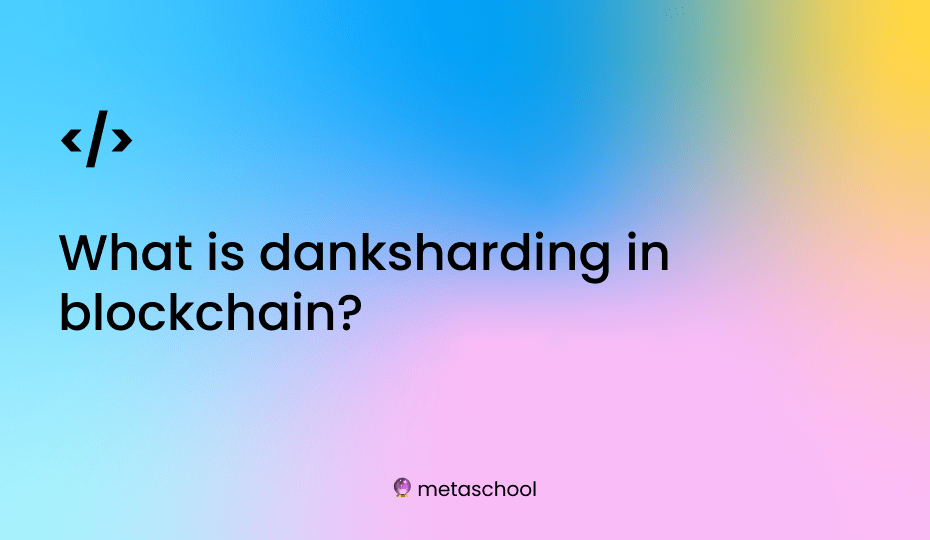Table of Contents
Danksharding is a term that refers to the practice of splitting a blockchain network into multiple smaller networks, or “shards”, in order to improve scalability and performance.
What is danksharding?
The idea behind danksharding is that by dividing the network into multiple shards, each shard can process transactions and reach consensus independently, allowing the overall network to handle more transactions and operate more efficiently.
The term “danksharding” is a combination of the words “dank” (a slang term meaning “excellent” or “cool”) and “sharding” (a term borrowed from database systems, where it refers to the practice of dividing a large database into smaller, independent pieces). The term was coined by Ethereum co-founder Vitalik Buterin as a humorous way to describe the concept of sharding in blockchain networks.
The idea of danksharding originated in the context of the Ethereum Blockchain, where scalability has been a major challenge.
Ethereum is a decentralized platform that allows users to build and run applications on the blockchain, and as the platform has grown in popularity, the number of transactions on the network has increased significantly. This has led to congestion and high transaction fees, making it difficult for users to interact with the network in a cost-effective way.
In response to this challenge, the Ethereum development team has worked on a scalability solution called sharding, which involves dividing the Ethereum network into multiple shards.
Each shard is a separate blockchain that operates independently, allowing transactions to be processed in parallel and increasing the overall throughput of the network. The goal is to enable Ethereum to support thousands of transactions per second, making it more usable and efficient for users.
How does danksharding work?
Here’s how 👇🏼
- The network is divided into multiple shards. Each shard is a separate blockchain with its own transaction history and state.
- Each shard processes transactions and reaches consensus independently, using a consensus algorithm such as proof-of-work or proof-of-stake.
- When a transaction is submitted to the network, it is assigned to a specific shard based on the address of the sender or recipient.
- The shard processes the transaction and updates its state accordingly.
- If the transaction involves assets or information that is not stored on the shard, the shard may need to communicate with other shards to validate the transaction and update its state.
- Once the transaction has been processed and the shard’s state has been updated, the transaction is considered confirmed and can be included in the shard’s transaction history.
In this way, danksharding allows a blockchain network to process transactions in parallel and increase its overall throughput. It also allows the network to scale horizontally, by adding more shards as needed, rather than vertically, by increasing the computational power of the nodes on the network.
Overall, it is a promising solution for improving the scalability of blockchain networks. It allows networks to process more transactions and operate more efficiently, making them more usable and accessible for users.
